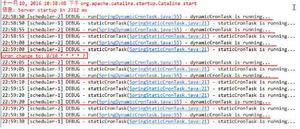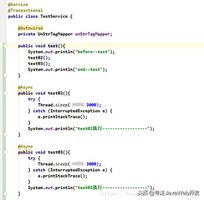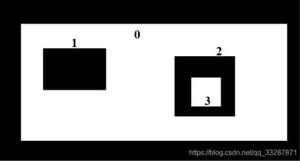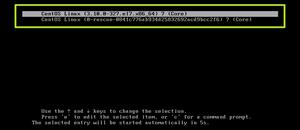tkinter root.mainloop与While True循环
我正在使用tkinter来显示一些基于所读取电压的标签。但是,它在读取一次后停止执行。我发现这是由于root.mainloop()引起的。但是我无法修复它。我已经包含了我的代码。root.mainloop()位于while
True末尾。
from Tkinter import *import spidev
import time
import os
import RPi.GPIO as GPIO
import numpy
GPIO.cleanup()
GPIO.setmode(GPIO.BOARD)
GPIO.setup(7, GPIO.OUT)
GPIO.setup(11, GPIO.OUT)
GPIO.setup(13, GPIO.OUT)
GPIO.setup(15, GPIO.OUT)
GPIO.setup(12, GPIO.OUT)
adcvolt = [0,0,0,0,0,0,0,0,0,0,0,0,0,0,0]
batvolt = [0,0,0,0,0,0,0,0,0,0,0,0,0,0,0]
root = Tk() #Makes the window
w,h = root.winfo_screenwidth(), root.winfo_screenheight()
root.overrideredirect(1)
root.geometry("%dx%d+0+0"%(w,h))
labelFont = ("times",15 ,"bold", "italic")
labelText1 = StringVar()
labelText2 = StringVar()
labelText3 = StringVar()
labelText4 = StringVar()
labelText5 = StringVar()
labelText6 = StringVar()
labelText1.set("Battery Management System")
label1 = Label(root, textvariable=labelText1, height=3, anchor="center")
label1.config(font=labelFont)
label1.pack()
labelText2.set("Wait")
label2 = Label(root, textvariable=labelText2, height=3, anchor="center")
label2.config(font=labelFont)
label2.pack()
labelText3.set("Wait")
label3 = Label(root, textvariable=labelText3, height=3, anchor="center")
label3.config(font=labelFont)
label3.pack()
labelText4.set("Wait")
label4 = Label(root, textvariable=labelText4, height=3, anchor="center")
label4.config(font=labelFont)
label4.pack()
labelText5.set("Wait")
label5 = Label(root, textvariable=labelText5, height=3, anchor="center")
label5.config(font=labelFont)
label5.pack()
labelText6.set("Wait")
label6 = Label(root, textvariable=labelText6, height=3, anchor="center")
label6.config(font=labelFont)
label6.pack()
#root.wm_title("Window Title") #Makes the title that will appear in the top left
#root.config(background = "#FFFFFF") #sets background color to white
# Open SPI bus
spi = spidev.SpiDev()
spi.open(0,0)
# Function to read SPI data from MCP3008 chip
# Channel must be an integer 0-7
def ReadChannel(channel):
adc = spi.xfer2([1,(8+channel)<<4,0])
data = ((adc[1]&3) << 8) + adc[2]
return data
#Function to select multiplexer channel on 74HCT4067 chip
#Channel must be an integer 0-15
def MuxSelect(muxchannel):
if muxchannel == 0:
GPIO.output(7,0)
GPIO.output(11,0)
GPIO.output(13,0)
GPIO.output(15,0)
elif muxchannel == 1:
GPIO.output(7,0)
GPIO.output(11,0)
GPIO.output(13,0)
GPIO.output(15,1)
elif muxchannel == 2:
GPIO.output(7,0)
GPIO.output(11,0)
GPIO.output(13,1)
GPIO.output(15,0)
elif muxchannel == 3:
GPIO.output(7,0)
GPIO.output(11,0)
GPIO.output(13,1)
GPIO.output(15,1)
elif muxchannel == 4:
GPIO.output(7,0)
GPIO.output(11,1)
GPIO.output(13,0)
GPIO.output(15,0)
elif muxchannel == 5:
GPIO.output(7,0)
GPIO.output(11,1)
GPIO.output(13,0)
GPIO.output(15,1)
elif muxchannel == 6:
GPIO.output(7,0)
GPIO.output(11,1)
GPIO.output(13,1)
GPIO.output(15,0)
elif muxchannel == 7:
GPIO.output(7,0)
GPIO.output(11,1)
GPIO.output(13,1)
GPIO.output(15,1)
elif muxchannel == 8:
GPIO.output(7,1)
GPIO.output(11,0)
GPIO.output(13,0)
GPIO.output(15,0)
elif muxchannel == 9:
GPIO.output(7,1)
GPIO.output(11,0)
GPIO.output(13,0)
GPIO.output(15,1)
elif muxchannel == 10:
GPIO.output(7,1)
GPIO.output(11,0)
GPIO.output(13,1)
GPIO.output(15,0)
elif muxchannel == 11:
GPIO.output(7,1)
GPIO.output(11,0)
GPIO.output(13,1)
GPIO.output(15,1)
elif muxchannel == 12:
GPIO.output(7,1)
GPIO.output(11,1)
GPIO.output(13,0)
GPIO.output(15,0)
elif muxchannel == 13:
GPIO.output(7,1)
GPIO.output(11,1)
GPIO.output(13,0)
GPIO.output(15,1)
elif muxchannel == 14:
GPIO.output(7,1)
GPIO.output(11,1)
GPIO.output(13,1)
GPIO.output(15,0)
elif muxchannel == 15:
GPIO.output(7,1)
GPIO.output(11,1)
GPIO.output(13,1)
GPIO.output(15,1)
# Function to convert data to voltage level,
# rounded to specified number of decimal places.
def ConvertVolts(data,places):
volts = (data * 3.3) / 1023
volts = round(volts,places)
return volts
# Define sensor channels
voltage_channel = 0
# Define delay between readings
delay = 2
while True:
count = 0
while count<15:
MuxSelect(count)
# Read the voltage sensor data
voltage_level = ReadChannel(voltage_channel)
voltage_volts = ConvertVolts(voltage_level,2)
adcvolt[count] = voltage_volts
batvolt[count] = adcvolt[count] * 2.842
#print adcvolt[count]
#print batvolt[count]
#print count
count = count + 1
#time.sleep(delay)
labelText2.set('Cell1= '+str(batvolt[0])+'V Cell2= ' +str(batvolt[1])+'V Cell3= '+str(batvolt[2]))
#root.update()
labelText3.set('Cell4= '+str(batvolt[3])+'V Cell5= ' +str(batvolt[4])+'V Cell6= '+str(batvolt[5]))
# root.update()
labelText4.set('Cell7= '+str(batvolt[6])+'V Cell8= ' +str(batvolt[7])+'V Cell9= '+str(batvolt[8]))
# root.update()
labelText5.set('Cell10= '+str(batvolt[9])+'V Cell11= ' +str(batvolt[10])+'V Cell12= '+str(batvolt[11]))
# root.update()
labelText6.set('Cell13= '+str(batvolt[12])+'V Cell14= ' +str(batvolt[13])+'V Cell15= '+str(batvolt[14]))
root.update()
print "shit"
medianvolt = numpy.median(batvolt)
maxvolt = max(batvolt)
minvolt = min(batvolt)
diff1 = maxvolt-medianvolt
diff2 = medianvolt-minvolt
if diff1>0.02 or diff2>0.02:
GPIO.output (12,1)
time.sleep(120)
GPIO.output (12,0)
# Wait before repeating loop
time.sleep(delay)
root.update()
root.mainloop() #start monitoring and updating the GUI. Nothing below here runs.
回答:
Tkinter需要mainloop工作(以调用所有功能)。
使用root.after(time_ms, function_name_without_() )(之前mainloop)
运行某些功能-该功能必须运行相同的功能才能after(...)循环工作。
在Tkinter中,您不使用,while True因为while True是使(main)循环,
但Tkinter具有自己的mainloop。
而且不要使用sleep()-使用after()
将while True(除外mainloop)中的所有代码放入某个函数中,然后使用进行调用after()。
用秒after()代替sleep()。
import Tkinter as tkmaster = tk.Tk()
def my_mainloop():
print "Hello World!"
master.after(1000, my_mainloop)
master.after(1000, my_mainloop)
master.mainloop()
以上是 tkinter root.mainloop与While True循环 的全部内容, 来源链接: utcz.com/qa/401633.html






